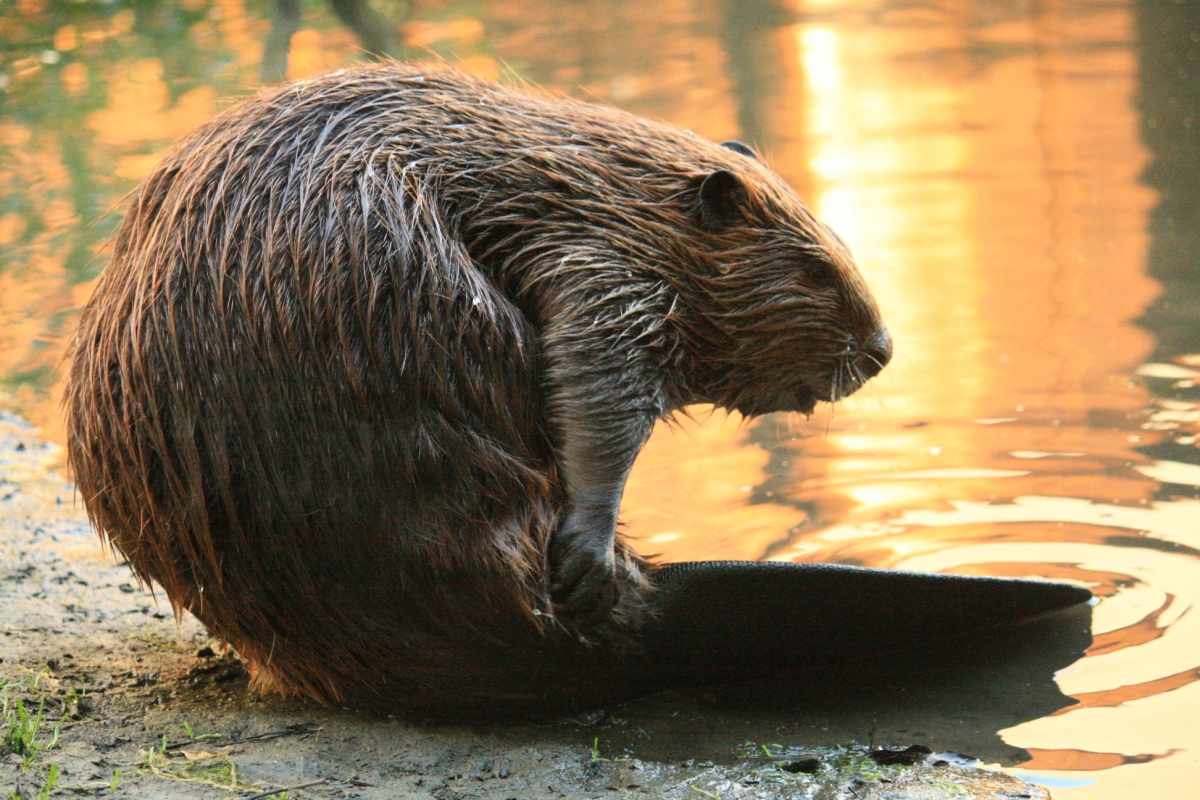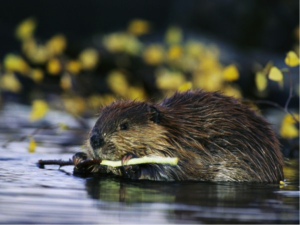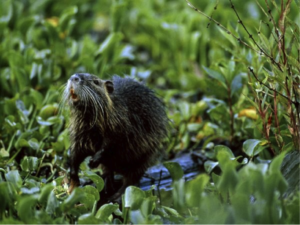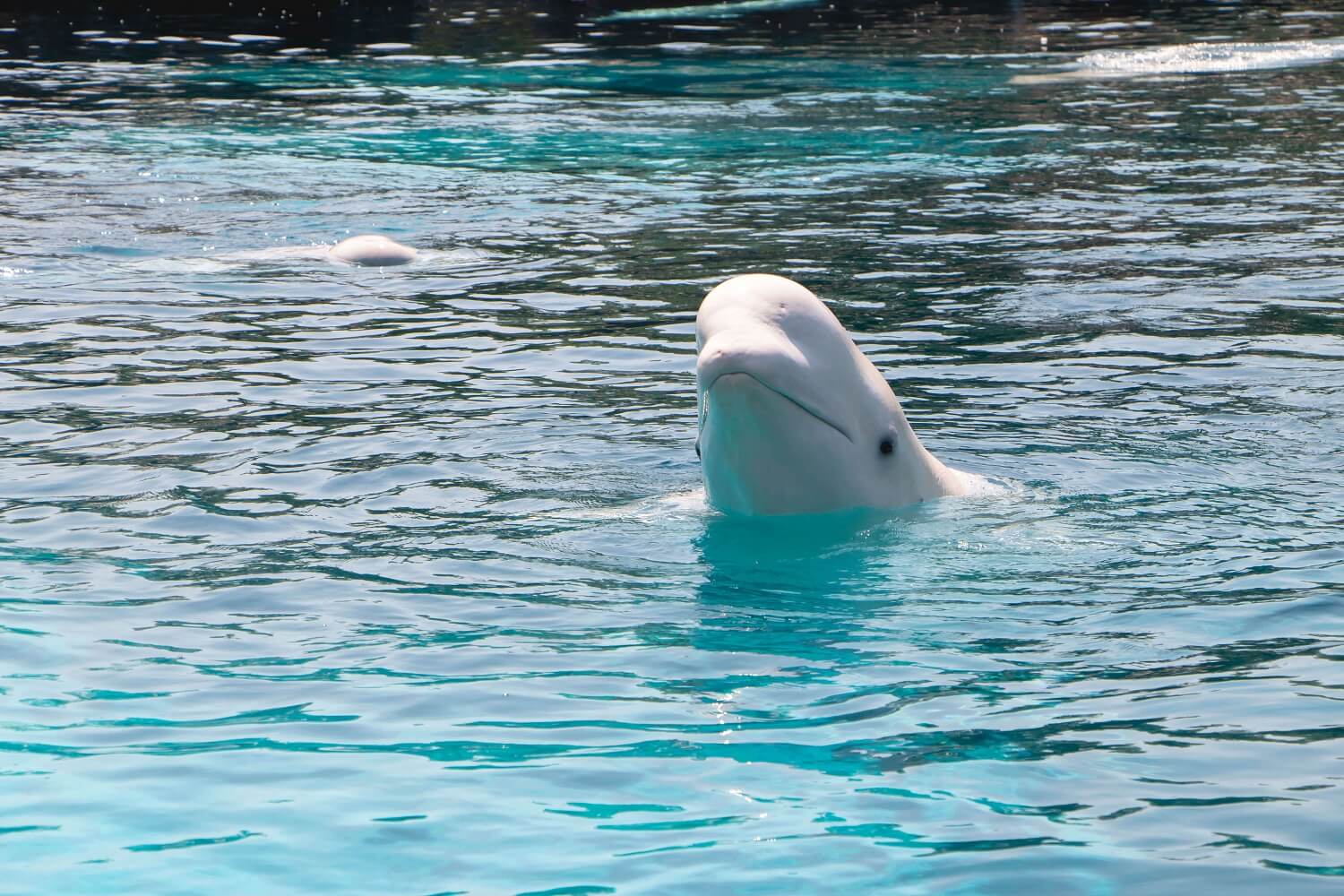For many, when we reflect on Canada’s history and the economic value provided by the fur trade, we think of French Canadian voyageurs, The Hudson’s Bay Company and inevitably, Canada’s national symbol, Castor Canadensis, the beaver.[i] Largely unconsidered and perhaps seemingly unrelated, is the story of the nutria – a beaver look-a-like, introduced to be bred in captivity for its fur – and its connection to the fur trade and the health of Canada’s wetlands.
Beaver (Castor Canadensis)
For nearly 250 years, the trapping of beavers for their pelt sustained Canada’s fur trade and supplied the European market with the fur to meet their fashion demands. In 1670, the Hudson’s Bay Company was founded for the chief purpose of trading beaver fur. With over 100,000 beaver pelts being shipped to Europe each year during the peak of the trade, it’s perhaps not surprising that beavers faced extinction by the late 19th century.[ii]
The extinction of the beaver was only prevented because of two events: first, a change in fashion preference from felt to silk which drastically reduced the demand for beaver pelts and secondly, the rise of a beaver conservation movement, began under the leadership of Grey Owl in the early 20th Century.[iii]
The tremendously fashionable wide-brimmed felt hat of 18th and 19thcentury Europe.[iv]
From fur trapping to fur farming
Years of over-trapping caused the severe dwindling of wild fur animal populations and consequently spurred the development of fur farms. Beginning in the late 1800s in Canada, animals began to be bred in captivity for their fur, with the two main species being mink and silver fox. Currently, as much as 85 percent of fur produced worldwide comes from fur farms,[v] with Canada producing 1.6 million pelts annually.[vi]
While it may seem reasonable to equate overhunting of wild furbearing species with extinction or extirpation, and likewise, fur farming with concerns of animal welfare, an often overlooked aspect of the fur trade is the impact of escaped farmed fur animals on wildlife and the environment.
The Fur Institute of Canada claims fur farming has environmental benefits and is a “no waste” industry. They state that fur farmed animals are fed the wastes from fish and poultry processes and wood chips, by-products of the lumber industry are used for bedding. What is not captured within this ecological footprint snapshot of the fur farm industry is the havoc and significant environmental changes caused by escaped fur farm animals.
One such fur farm escapee which has gained much attention as an invasive and alien species, is Myocastor coypus, commonly known as a nutria. Nutria may resemble the beaver, but they are actually a semi-aquatic rodent native to South America.[vii] Nutria were first introduced as a fur farm animal in the late 19th century and escaped to the wild through deliberate releases by furriers and during extreme weather events such as flooding.[viii] Nutria have a ravenous, herbivorous appetite and have been dubbed one of the “world’s worst invasive species” in wetlands.[ix]
Nutria feed extensively on aquatic plant roots and thus cause particular destruction to wetlands, which they turned into denuded areas. Without vegetation cover, the areas are subject to erosion and become open water. Nutria have a high reproductive rate and without any natural predators, they can easily overpopulate and destroy wetland ecosystems.
Nutria (Myocastor coypus)[x]
Invasive species and threats to native biodiversity
The threat posed by nutria, as an invasive specie in wetlands, should not be underestimated. The International Union for Conservation of Nature has identified invasive species as being the second most prominent threat to native biodiversity, natural ecosystems and ecosystem services. Invasives are generally more successful at competing for available natural resources since they lack predators in the new environment in which they are placed. This has obvious and harmful impacts on biodiversity since native plant and animal species can be out-competed.
The temperate climate of British Columbia have allowed the nutria to proliferate and as reflected in a 1958 handbook titled Alien Species in British Columbia:[xi]
The Nutria has been imported to British Columbia over a period of years, beginning about 1938. It is believed the first ones were brought in by a resident of Ladner at that time for the purpose of fur-farming. A few of these animals have escaped from time to time and are reported occasionally on the Lower Mainland and on Vancouver Island.
In some parts of the United States feral populations of Nutria have become established, to the serious detriment of large tracts of marsh lands and the native fauna therein.
Management efforts to control nutria have been fierce to combat their ever increasing numbers and to stop the conversion of wetland to areas of open water. In British Columbia, nutria can be “killed anywhere at any time” without requiring a “hunting license to hunt or kill.”[xii] They are also listed as an “alien invasive species” pursuant to the BC Community Chart – Environment and Wildlife Regulation.[xiii]
Lessons Learned?
Nutria share a complex and unfortunate history with an industry driven by a purely aesthetic desire. Canada’s fur trade reduced a 60 million strong population of beavers to as few as 100,000 because of over-trapping. The loss of the beaver caused a repercussive destruction of wetland habitat, whose existence is shaped and sustained by their behaviour. Beavers are a keystone species and are fundamental to the integrity of wetlands. Encouragingly, their numbers have witnessed a rebound in response to concerted legislative and conservation action.
Following the demise of Canada’s fur trade was the development of fur farming. Because of their use in fur production and deliberate and accidental release, nutria pose a severe threat to wetland ecosystems – the home of Canada’s national symbol. While nutria may be emblematic of a “cute and cuddly” poster species, it shares in a 400+ year history which began with Jacques Cartier’s voyage in 1534 and ends, with its attempted eradication. Nutria are just one farmed fur animal which allow us to glimpse the short-sightedness of our actions and aesthetic desires and the true impact of our historic commodification of animals.
Written by Kerrie Lowitt – MSc, BES, JD Candidate – Summer Student for Animal Justice Canada
This blog and the contents herein are for informational purposes only and do not constitute legal advice. Readers are advised to seek legal counsel prior to acting on any matters discussed herein. The opinions expressed are those of the author.
Citations:
[i] Online: http://www.pch.gc.ca/eng/1363619815777/1363619877898
[ii] Ibid.
[iii] Graeme Wynn, Canada and Arctic North America: An Environmental History (Santa Barbara ABC CLIO, 2007).
[iv] Ibid.
[v] Online: http://www.fur.ca/files/fur_trade_at_a_glance.pdf at 8.
[vi] Online: http://www.fur.ca/FF_canadian_fur_farming.php
[vii] Online: http://www.env.gov.bc.ca/lower-mainland/wildlife/species/species_lists.htm#third
[viii] Susan Jojola, Gary Witmer and Dale Noltel Nutria: An invasive rodent rest or valued resource? 2005. Online at: http://digitalcommons.unl.edu/cgi/viewcontent.cgi?article=1098&context=icwdm_wdmconfproc
[ix] Online: http://en.mercopress.com/2009/08/02/south-americas-nutria-one-of-the-worst-invasive-species-in-us-wetlands
[x] Online: http://animals.nationalgeographic.com/animals/mammals/nutria/
[xi] Online: http://www.geog.ubc.ca/biodiversity/efauna/AlienSpeciesinBritishColumbiaHistoricalRecords.html
[xii] Online: http://www.env.gov.bc.ca/lower-mainland/wildlife/species/species_lists.htm
[xiii] Spheres of Concurrent Jurisdiction – Environment and Wildlife Regulation, BC Reg 144/2004.






